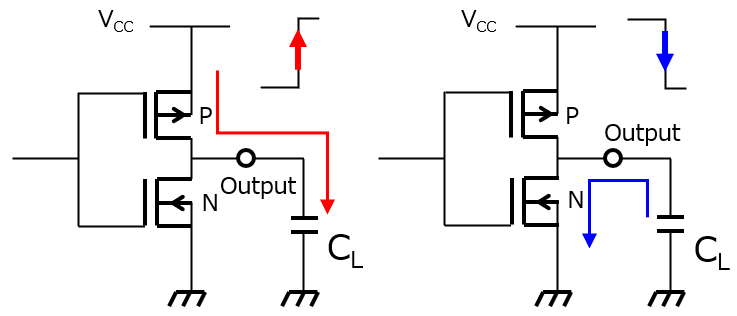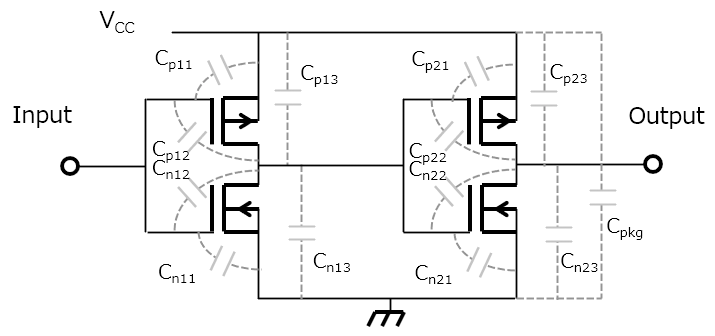- General Top
- SEMICONDUCTOR
- STORAGE
- COMPANY
-
My ToshibaSemicon
- Semiconductor Top
-
ApplicationsAutomotive
Body Electronics
xEV
In-Vehicle Infotainment
Advanced Driver-Assistance Systems (ADAS)
Chassis
IndustrialInfrastructure
BEMS/HEMS
Factory Automation
Commercial Equipment
Consumer/PersonalIoT Equipment
Healthcare
Wearable Device
Mobile
Computer Peripherals
-
ProductsAutomotive Devices
Discrete Semiconductor
Diodes
Transistors
Logic ICs
Analog Devices
Digital Devices
Wireless Devices
※
: Products list (parametric search)
Power SemiconductorsSiC Power Devices
※
: Products list (parametric search)
Isolators/Solid State RelaysPhotocouplers
Digital Isolators
Solid State Relays
Fiber Optic Transmitting Modules
※
: Products list (parametric search)
MOSFETsIGBTs/IEGTsBipolar Transistors※
: Products list (parametric search)
Diodes※
: Products list (parametric search)
MicrocontrollersMotor Driver ICsIntelligent Power ICs※
: Products list (parametric search)
Power Management ICsLinear ICs※
: Products list (parametric search)
General Purpose Logic ICsLinear Image SensorsOther Product ICsOther Product ICs
※
: Products list (parametric search)
-
Design & Development
Design & Development
Innovation Centre
At the Toshiba Innovation Centre we constantly strive to inspire you with our technologies and solutions. Discover how to place us at the heart of your innovations.
-
Knowledge
Knowledge
Highlighted Topics
Further Materials
Other
- Where To Buy
- Part Number & Keyword Search
- Cross Reference Search
- Parametric Search
- Stock Check & Purchase
This webpage doesn't work with Internet Explorer. Please use the latest version of Google Chrome, Microsoft Edge, Mozilla Firefox or Safari.
require 3 characters or more. Search for multiple part numbers fromhere.
The information presented in this cross reference is based on TOSHIBA's selection criteria and should be treated as a suggestion only. Please carefully review the latest versions of all relevant information on the TOSHIBA products, including without limitation data sheets and validate all operating parameters of the TOSHIBA products to ensure that the suggested TOSHIBA products are truly compatible with your design and application.Please note that this cross reference is based on TOSHIBA's estimate of compatibility with other manufacturers' products, based on other manufacturers' published data, at the time the data was collected.TOSHIBA is not responsible for any incorrect or incomplete information. Information is subject to change at any time without notice.
require 3 characters or more.
How can the power dissipation of a general-purpose logic IC be calculated?
The power dissipation of a general-purpose logic IC can be calculated by obtaining the static current and dynamic current, and then multiplying that current by the voltage applied to the IC.
Power dissipation can be obtained by multiplying the above current by the voltage applied to an IC.
Static power dissipation: PS
While general-purpose logic ICs are in a static state (i.e., while its input signal remains unchanged), little current flows in it except tiny leakage current that flows across the internal reverse-biased pn junction (known as static supply current, ICC). Static power dissipation is ICC multiplied by the supply voltage.
PS = VCC x ICC
VCC: Voltage applied to a logic IC
ICC: Static supply current shown in the datasheet
Dynamic power dissipation
Dynamic supply current is the current that flows in general-purpose logic while its input transitions between High and Low. This current flows during the charging and discharging of capacitance. It is necessary to consider both parasitic capacitance (internal equivalent capacitance) and load capacitance. Dynamic power dissipation is obtained by multiplying this current by the voltage applied to the P-channel or N-channel MOSFET. Here, for the sake of simplicity, the VCC value at which the maximum current flows is used for power calculation.
Dynamic power dissipation due to load capacitance (CL): PL
PL is dissipated when an external load is charged and discharged as shown by the Fig. 1.
The amount of charge (Q) stored on the load capacitance is calculated as follows:
QL = CL x VCC
CL: Load capacitance
Let the output signal frequency be fOUT (= 1/TOUT). Then, the average current (IL) is expressed as follows:
IL = QL / T = CL * VCC * fOUT
Hence, dynamic power dissipation (PL) is:
PL = VCC * IL = CL * VCC^2 * fOUT
If an IC has multiple outputs, its dynamic power dissipation can be calculated as follows:
PL = VCC^2 * Σ (CLn* fOUTn)

Dynamically Consumed Power with Equivalent Internal Capacitive CPD: PPD
General-purpose logic ICs have various parasitic capacitances as shown by Fig. 2. These capacitances are equivalently expressed as CPD. (Actually, CPD is calculated from power dissipation at relatively high frequency (1 MHz) under a zero-load condition.) PPD is the power dissipated by the equivalent capacitance of an IC and can be considered in the same manner as PL. Note, however, that PPD is calculated at input frequency (fIN):
PPD = VCC * IL = CPD * VCC^2 * fIN

Total Power Dissipation: PTTL
Total power dissipation (PTTL) can be obtained as the sum of static power dissipation (PS) and dynamic power dissipation (PL + PPD):
PTTL=PS + PL + PPD
Related Links
The following documents also contain related information.




